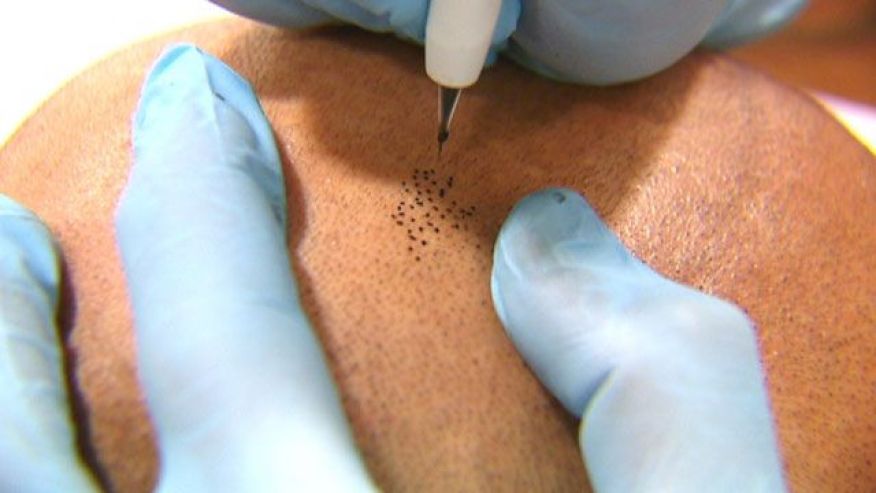
When it comes to experimenting with in-office treatments, lasers are rapidly becoming a favorite option, due to their dramatic results – and quick recovery times. “They’re one of the fastest-growing services in-office,” Robert Anolik, a dermatologic surgeon in New York City, tells Real Simple. From minimizing the appearance of fine lines and wrinkles to stimulating collagen production, lasers can work to turn back the hands of time. But you might be curious about how lasers work, and how to care for your sensitive, post-procedure skin. Learn the facts about this growing cosmetic trend – and discover how you can pamper your complexion following an in-office treatment.
Lasers: Ablative and non-ablative
Though there are dozens of different kinds of lasers, each one works by creating targeted damage, which can help to promote the body’s natural healing process. “Cells are stimulated to repair the targeted region through the production of collagen and new cells, which ultimately results in nicer-looking and feeling skin overall,” Adam Kolker, a plastic surgeon in New York City, tells Real Simple. But when it comes to determining recovery times, there are two distinguishing categories: ablative and non-ablative lasers. “The principal distinction between procedures is whether the skin is intact or whether the surgery left open skin,” Ellen Marmur, MD, chief of the Division of Dermatologic and Cosmetic Surgery at the Mount Sinai Medical Center, tells WebMD. Keep reading to discover the key, distinguishing factors, and talk to your dermatologist about which one is right for restoring youthfulness and vitality to your skin.
- Ablative lasers. According to the UCSF Medical Center, ablative lasers are considered the quickest and most effective method for turning back the hands of time. Delivering a targeted wavelength of light to the skin that penetrates the surface, this method of treatment works by chipping away the top layers of the epidermis and quickly removing visible damage. While only a single treatment is typically required, because surface-level damage is incurred, recovery can take up to 10 days.
- Non-ablative lasers. Touting similar results – but functioning differently than their surface-level counterparts – non-ablative laser treatments target deep within the dermis, leaving the top layers of the skin untouched. The less aggressive approach of a non-ablative laser significantly reduces recovery times, but in many cases, multiple sessions are required to achieve desired results.
Recovery
While your skin’s recovering from a laser resurfacing treatment, it’s important to give it a little extra TLC. “To optimize your results, you want to heal without any discoloration. If your skin is really red, you really want to baby it after [laser] surgery to prevent pigmentation,” says Marmur. Not sure how you can minimize post-procedure swelling and discomfort? Read on to discover how you can nourish your post-treatment skin, to ensure a quick recovery and top-notch results.
- Downtime and after-care instructions. After treatment with an ablative laser, you can expect two to three days of oozing, pinpoint bleeding, and up to one week of crusting, Paul Friedman, a dermatologist with practices in New York City and Houston, tells Real Simple. Sunburn-like redness can last for up to 10 days. In general, UCSF Medical Center recommends leaving your skin bandaged and untouched for several days following your treatment. Alternatively, resurfacing with a non-ablative laser can begin to heal in as little as a few hours. In fact, patients can usually return their normal activities, right away. But regardless of your treatment, it’s important to follow a strict, after-care regimen to keep skin nourished and healthy. Discover post-procedural essentials, perfect for use pending your dermatologist’s approval.
- Wash. Give your skin the support it needs and promote rapid recovery with SkinCeuticals Gentle Cleanser. Formulated for sensitive or traumatized post-procedure skin, this non-irritating wash works to gently, yet thoroughly, remove impurities – without stripping or overdrying your complexion. Condition, soothe and calm with this ultra-nourishing cleanser.
- Avoid direct sunlight. Following an ablative laser treatment, your Dr. may recommend that you stay inside, and avoid direct sunlight. “The first few days after having a procedure, it’s best to avoid the sun,” Steven Hopping, MD, president of the American Academy of Cosmetic Surgery, tells WebMD. When you are cleared to go out, “opt for a sunscreen that blocks alpha and beta sun rays,” he adds, such as broad spectrum Coola Mineral Baby Organic SPF 50, which boasts a naturally derived, irritant-free formula.
- Hydrate. According to WebMD, keeping your skin moisturized is the key to trouble-free healing. If your laser resurfacing treatment has left you with bothersome, pealing skin, Marmur recommends applying moisturizer to a warm, wet washcloth, and very gently massaging your skin. Try Avene Skin Recovery Cream DEFI, which is formulated to reduce inflammation and restore the skin’s natural balance.
Camouflage inflammation
Post-procedure, make sure to exercise caution before returning to your cosmetics routine; the top layers of the skin should be free from any open wounds. Depending on the type of treatment you received, this can be anywhere from a few hours to a few weeks. When you are able to resume wearing makeup, use the tips and tricks included here to cleverly disguise a red or inflamed complexion.
- Get flawless with minerals. Whether powder or liquid, mineral-based makeup touts a variety of skin-soothing benefits. In fact, if you suffer from skin sensitivity – such as post-resurfacing irritation – mineral makeup could be the best option for you, according to Self. This is because mineral makeup generally contains less aggravating ingredients – but it’s important to be diligent about reading the ingredient label. For excellent coverage and naturally derived ingredients, reach for skin-perfecting Colorescience Pressed Mineral Foundation. Formulated to accommodate a wet or dry application, this vitamin-infused pigment glides on seamlessly, and provides medium to full coverage, that’s ideal for concealing and smoothing.
- Go green. Green resides on the opposite side of the color wheel from red. So applying a green-tinted primer can work to cancel out post-procedure redness and irritation, giving you a more natural-looking skin tone, according to WebMD. Apply a thin layer of Pur Minerals Color Correcting Primer Redness Reducer – Green, which has been clinically proven to brighten and firm the skin’s appearance, plus reduce the look of redness. For the most natural looking results, top the color-corrector with a powder foundation that’s one shade darker than your natural skin tone.
While caring for your post-procedure skin can seem daunting, it doesn’t have to be a difficult task. From gentle cleansers, to thick, soothing salves, you can use this simple to follow guide to pamper your post-procedure complexion. Treat yourself to a hassle-free laser treatment that can help to refresh and revive your skin – and maintain your youthful glow now, and in the decades to come.
[Source:- Skincare]


















